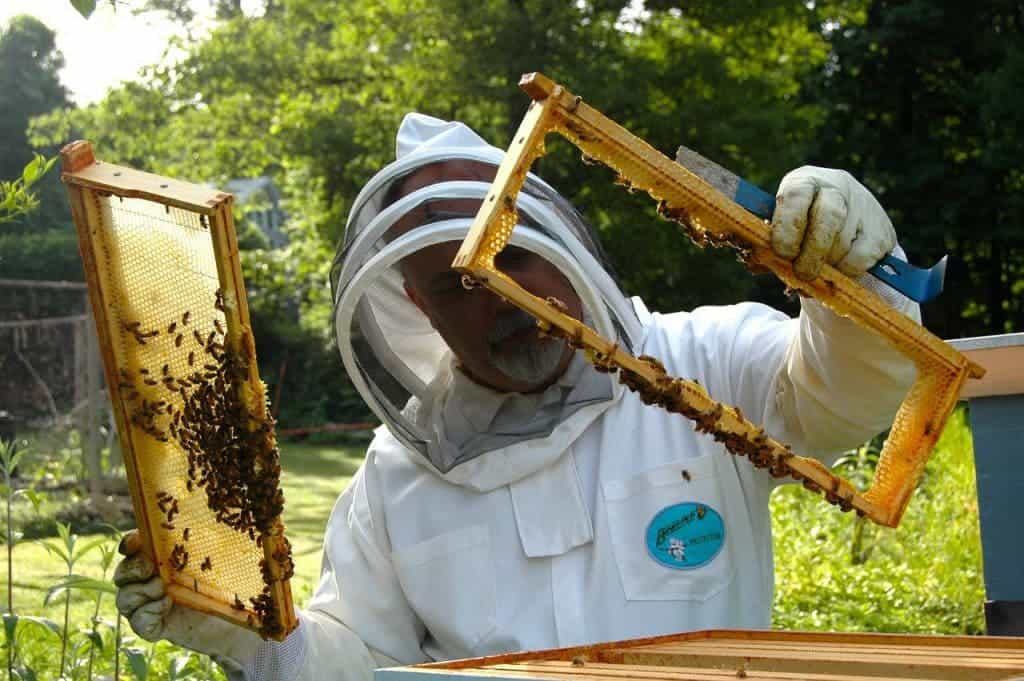Bees play a critical role in maintaining natural plant communities and ensuring production of seeds in most flowering plants. But humans too have a close relationship with bees, which spans over a history close to 9,000 years, a study found which analyzed ancient pottery. That’s a lot earlier than previous recounted evidence. Right now, however, honeybees are dying at an astonishing rate. The fact that bees have been feeding and nurturing humans for so long should only make us more humble, but also more steadfast in finding a solution.

Roffet-Salque, an organic chemist at University of Bristol, and colleagues have been analyzing pottery from Neolithic sites for almost two decades. Their projects were mainly focused on identifying dairy product chemical signatures from ancient potsherd. Sometimes – about 1 in 64 cases – they would also discover signatures from other food stuffs, including beeswax. Potsherd from places like Europe, the Near East and North Africa were screened.
Although this wasn’t their main scope, in time the University of Bristol researchers amassed a reliable data set of beeswax use. Since they knew how old the pottery was and where it came from, the researchers were able to map the spread of bees in space and time. It turned out to be quite amazing. As farming practices started to spread out of the east and into Europe, so did the bees. This beg the question: where honeybees first domesticated in the near east? Seems so, but it’s too early to draw conclusions. Experts agree the first evidence of beekeeping for honey appears in the paintings of ancient Egypt, dating from around 2500 B.C.
The oldest beeswax was found in Anatolia, or Asia Minor, dating back to the seventh millennium BC. The most abundant evidence, albeit not as old, were found in Central and Western Europe, as well as North Africa. This does not mean, of course, that the beeswax came from domesticated bees (though it could have). What’s certain is that honeybee use is extend by at least 2,000 years based on these findings.
Though there’s evidence of primitive sugarcane plantations in New Guinea as early as 10,000 years ago, sugar made its way into Europe much later. Hence for thousands of years humans had to rely on honey for a sweet treat. As for the beeswax, early farmers would use it to store their grain, as fuel for lamps and even glue.
Interestingly enough, the researchers didn’t find any evidence of bees’ presence past the 57th parallel, or Scotland, parts of northern Scandinavia, Norway, Sweden and Finland. Roffet-Salque and colleagues naturally assume that this was “ecological limit” of where bees could survive at the time. That you can find bees almost anywhere today is due to human tendering.
“[The research] does demonstrate the close relationship that humans have had with honeybees for many thousands of years and suggests that the current crisis of honeybees is one that we should take very seriously, because it interferes with that close symbiotic relationship,” said Mark Winston, a professor of apiculture and social insects at Simon Fraser University who was not involved in the study for the WP.
The findings are important since they help paint a broader history of bees history. Bees leave no fossil traces, so these sort of studies are the closest we can get to understanding how populations fared up to 10,000 years ago. Considering today’s context, this is more important than ever as we desperately try to curb the effects climate change and colony collapse disorder have on honeybees all over the world, wild or domesticated alike. In the last half decade alone 30% of the national bee population has disappeared and nearly a third of all bee colonies in the U.S. have perished. A study last year found 35 pesticides and fungicides, some at lethal doses, in the pollen collected from bees that were used to pollinate food crops in five U.S. states. In another research study, bees that contacted pollen contaminated with fungicides ended up three times more likely to get infected by a parasite closely associated with Colony Collapse Disorder, Global Research reports.


